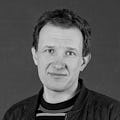European Public Space Design Programs with Social Cohesion and Intercultural Dialogue in Mind
Over the last two decades, a context of rising diversity, neoliberalism, austerity, and difficulties of refugee migration crisis and terrorism in Europe have led to a series of public space design programs seeking to promote social cohesion and intercultural dialogue.
These European public space programs are built upon the premise that social cohesion and intercultural dialogue, usually understood as the glue of society, are best promoted in our public spaces, as they are the key contact and encounter spaces, and are thus the essential tools to achieve it.
Underlying their rationale is an EU commitment since the 2000s to socio-culturally sensitive urban policies and initiatives focused on social mixing and cultural diversity and more recently since 2011 on Interculturalism.
What is striking in this whole progress is that after two decades of implementation of such projects, it continues to be unclear whether they have achieved their objectives and if social cohesion has indeed been realised through innovative public space design.
To date, there was not yet any attempt to evaluate the design aims of such public space design programs against their social outcomes. This knowledge gap provides the impetus for this research. Furthermore, it raises more fundamental research questions:
- Why different contexts and politics of multiculturalism, and social integration and cohesion agendas, have led to investing in similar public space programs with social cohesion and intercultural dialogue in mind?
- Where, how and why social interaction among the different user groups and individuals in those diverse communities occur against the designers and managers aims?
- How broad, how deep and how significant has been the social interaction and intercultural mixing occurring in such public spaces? And have those interactions resulted in social cohesion?
- What role(s) have those public spaces played in supporting social cohesion? And how has urban design helped to achieve it?
To address these questions, this project will investigate a series of case studies in the Netherlands, Belgium, Denmark, Spain and the UK.
Funding sources include CUROP 2017 and 2018, Cities Research Centre Seed Funding 2017 and RMIT Exchange Grant 2018.
Canlyniadau
Occurred
Impact through research outputs on policy, practice and research:
- Edited Book: Aelbrecht and Stevens (2018) Public Space Design and Social Cohesion: an international comparison, Routledge series on Planning and Urban Design.
Impact through public events on policy, practice and research:
- Public lecture and Roundtable Discussion on ‘Public Space and Social Cohesion’ at RMIT Melbourne in September 2018.
- International Workshop of Research Exchange on ‘Public Space and Social Cohesion’, Cardiff University, December 2017.
Planned
Impact through research outputs on policy, practice and research:
- To develop European inter-cultural and socially sensitive design policy and guidance for brief writing and judging of urban design competitions and for the production of public spaces in socio-cultural diverse contexts.
- To produce a tool kit for assessing and designing European inter-cultural and socially sensitive public space design, in the form of a report or monograph, for researchers, policy makers, planners and urban designers.
Impact through public events on policy, practice and research:
- Combined public lecture, book launch of my recently published book and roundtable discussion with practitioners and policy-makers and at Cardiff University and Urban Design Group in London in May 2019
Tîm y prosiect

Dr Patricia Lopes Simoes Aelbrecht
Uwch Ddarlithydd mewn Dylunio Trefol, Cynllunio ac Astudiaethau Rhyngddiwylliannol

Dr Richard Gale
Senior Lecturer in Human Geography

Yr Athro Gary Bridge
Professor of Human Geography

Dr Quentin Stevens
RMIT University

Dr Tuna Tasan-Kok
University of Amsterdam

Professor Tom Nielsen
Aarhus School of Architecture
Cefnogaeth
This research was made possible through the support of the following organisations: